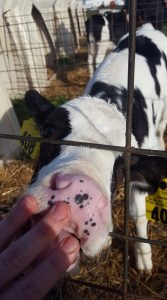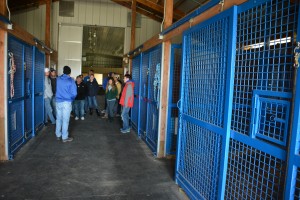As a pre-veterinary student I felt as though I knew all there was to know about the amazing research farm we have here on campus. Every semester so far I have had a few classes down on South campus and if I wasn’t directly on the farm for class, I got to smell it! Even though I had seen the dairy farm, Webb farm and the poultry houses prior to this field trip I learned so much about what goes on at each of these facilities. Scott Hopkins, University of Delaware’s farm superintendent, took us around and went in depth about experiments both successes and failures, different classes that are offered on the farm to target non-agriculture students, new technology that’s been included in each facility to help advance research, management practices and so much more! Even though it’s a close runner-up playing with the calves wasn’t my favorite part of this field trip. Scott Hopkins shared a ton of information with us about the research farm and I took a lot away from it that I can’t wait to share with others but if there was one thing overall that I took away from this trip is, there is always more to learn! I went into this field trip thinking I was going to know everything he talked about and I was pleasantly surprised. I found myself amazed with all of the new things I learned about the farm after the field trip was over! 



